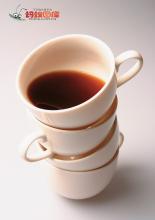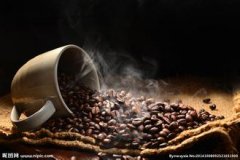The processing method of Grinding degree and Baking degree of Fine Coffee beans in La Suna Vahana Manor

The main coffee producing area on the island is located in Ijen Plateau, the Ijen Highland area around Ijen Volcano.
Java coffee is traditionally treated by washing.
On the whole, Indonesian coffee has a strong flavor, mellow taste, slightly syrup flavor and excellent acidity, and its two main export markets are Germany and Japan, which reflects the excellent quality of the coffee. What attracts consumers is the unique quality of its Arabica coffee beans. You can add milk or cream to high-quality Indonesian coffee without worrying about affecting its taste. Indonesian coffee is divided into six grades, the best of which is AP. But no one is sure what these two capital letters stand for.
When ships replaced sailboats, the coffee produced in these islands faced the same problem as Indian coffee from Mysore-that is, consumers were used to coffee affected by long-distance travel, so they were reluctant to accept the taste of this "fresh" coffee. In order to solve this problem, the Indonesian government tried to copy coffee affected by long-distance travel. They stored the coffee beans for as long as a year. However, what is not satisfactory is that the taste of this wet-treated coffee is not so widely accepted that it affects the good reputation of its coffee.
However, Indonesia's "store" or "journey" coffee is still produced today. It is generally sold under the brands of "Old Government", "Old Brown" and "Old Java".
Although Indonesia produces so much admirable coffee, it is puzzling that local residents prefer Turkish coffee to its famous European-style coffee, which is produced throughout Indonesia (Indonesia). Java plays an extremely important role in coffee history. In the mid-17th century, coffee trees were introduced to Indonesia by the Dutch (some official sources believe that earlier). The first batch of coffee from Java was sold to Amsterdam in 1712. However, coffee trees in all plantations were destroyed by coffee rust in 1877, and Robart coffee trees had to be introduced from Africa to replace the original species. Today, only 6% of Muay coffee beans and 10% of coffee beans are Arabian coffee beans. Indonesia is the world's leading producer of Robbins coffee, producing 6.8 million bags of coffee a year, with more than half of the coffee coming from small plantations, accounting for about 90 per cent of the total production.
The best growing areas of the archipelago are in Java, Sumatra (Blawan), Sulawesi (Sulawesi) and Flores.
Sumatra, the second largest island in the Indonesian archipelago, is the center of Indonesia's oil industry, and its rubber and timber are also famous exports. But the coffee in Sumatra is more eye-catching, similar to Java coffee, but with slightly heavier grains. Coffee beans from Mandheling and Ankola have also received a lot of attention, and the former is even known as the world's fullest coffee beans.
Java is the first region in Indonesia to grow coffee and has taken the lead in the world coffee market as early as the 18th century. The famous Java mocha, made from Java coffee mixed with Yemeni mocha, represents the coffee impression of an era. In addition, there is the classic monsoon coffee Moosooned-coffee, or old coffee Aged Coffee.
Coffee cultivation in Java was originally carried out as a large farm, established by Dutch colonists in the 18th century, and gradually transformed into small farmers after World War II and many changes. High-quality Javanese coffee usually comes from five existing large farms. Although Java coffee production only accounts for about 10% of Indonesia's total coffee production, it is an important component of Indonesian boutique coffee.
The topography of Sumatra is long and narrow. The topography of Sumatra is mainly from northwest to southeast of the island's Bali Mountains Barisan Mountains and the eastern lowlands. The mountains stretch, with more than 90 volcanoes and many volcanic lakes, volcanoes provide fertile soil suitable for coffee growth. For the tropical rain forest climate, high temperature and rainy all the year round.
Sumatra is the largest producer of Indonesian coffee, and well-known coffee-growing areas are mainly concentrated in the northern mountains, including Aceh in the northernmost province of Aceh and Sumatera Utara in North Sumatra. Including the well-known Mantenin Mandheling, Lin Dong Lintong, Jiayushan Gayo Mountain.
The name of Mandheling coffee is said to come from the local people, mandailing. The producing areas mostly point to the mountains in the north of Lake dopa, and the specific producing areas need to be verified.
Lintong coffee comes from the foothills around Lake Lake Toba in North Sumatra, Sumatra's largest volcanic lake, and its name comes from the small town called lintong in the southwest of Lake dopa.
Gayo mountain Coffee from Takengon, Takangong, Aceh Province and the mountains around Lake Lake Tawar.
Medan Medan and Padang Padang are important cities involved in coffee. They are the capital of North Sumatra and West Sumatra respectively, and they are also the most densely populated areas in Sumatra. The former is an important distribution center for Sumatra coffee exports, while the latter is also a well-known coffee production around, such as Ankola.
Coffee from Sumatra includes Arabica and Robusta, which is usually grown at high altitudes in the mountains, while robusta is grown in the lowlands. Coffee processing is famous for the traditional "wet planing", Giling Basah,wet-hulled, and the special treatment stems in part from the local humid climate.
Introduction of Indonesian coffee: main producing areas of Indonesian coffee
Figure 3 and 4: a brief map of the topography of Sumatra
Java: Java Coffee
Java produces exquisite aromatic coffee with relatively low acidity, delicate taste and good balance. The aroma and acidity of Java coffee is better than that of Sumatra and Sulawesi. The best plantations in Java are Blawan, Jambit, Kayumas and Pankur. Java mocha is a mixture of Java coffee and Yemeni mocha coffee.
Java is the most economically developed island in Indonesia and the most densely populated area.
Jakarta, the capital of Indonesia, located in the northwest of Java, is the largest city in Southeast Asia. In addition, Indonesia's second and fourth largest cities are located on the island of Java.
Important Notice :
前街咖啡 FrontStreet Coffee has moved to new addredd:
FrontStreet Coffee Address: 315,Donghua East Road,GuangZhou
Tel:020 38364473
- Prev

Acidity bright Lasuna Vahana Manor Fine Coffee Bean cultivation Geographic location, Climate, altitude
The main coffee producing area on the island is located in Ijen Plateau, the Ijen Highland area around Ijen Volcano. Java coffee is traditionally treated by washing. On the whole, Indonesian coffee has a strong flavor, mellow taste, slightly syrup flavor and excellent acidity. Its two main export markets are Germany and Japan, which reflects the excellent quality of the coffee. It is it that attracts consumers.
- Next

A brief introduction to the History and Culture of the Origin and Development of Pandora Fatima in Incht Villa, Guatemala
[about Pacamara varieties] the 2004 COE Cup became famous all over the world and won the championship frequently in 2-3 years. The Pakamara, produced by the grafted manor in Guatemala, hit a record price of $80.2 a pound of raw beans in 2008. The origin of the variety and name he is a variety derived from Maragogype and Parka Pacas. The first four letters of Maragogype and Pacas are combined to form Pac.
Related
- Does Rose Summer choose Blue, Green or Red? Detailed explanation of Rose Summer Coffee plots and Classification in Panamanian Jade Manor
- What is the difference between the origin, producing area, processing plant, cooperative and manor of coffee beans?
- How fine does the espresso powder fit? how to grind the espresso?
- Sca coffee roasting degree color card coffee roasting degree 8 roasting color values what do you mean?
- The practice of lattes: how to make lattes at home
- Introduction to Indonesian Fine Coffee beans-- Java Coffee producing area of Indonesian Arabica Coffee
- How much will the flavor of light and medium roasted rose summer be expressed? What baking level is rose summer suitable for?
- Introduction to the characteristics of washing, sun-drying or wet-planing coffee commonly used in Mantenin, Indonesia
- Price characteristics of Arabica Coffee Bean Starbucks introduction to Manning Coffee Bean Taste producing area Variety Manor
- What is the authentic Yega flavor? What are the flavor characteristics of the really excellent Yejasuffi coffee beans?

